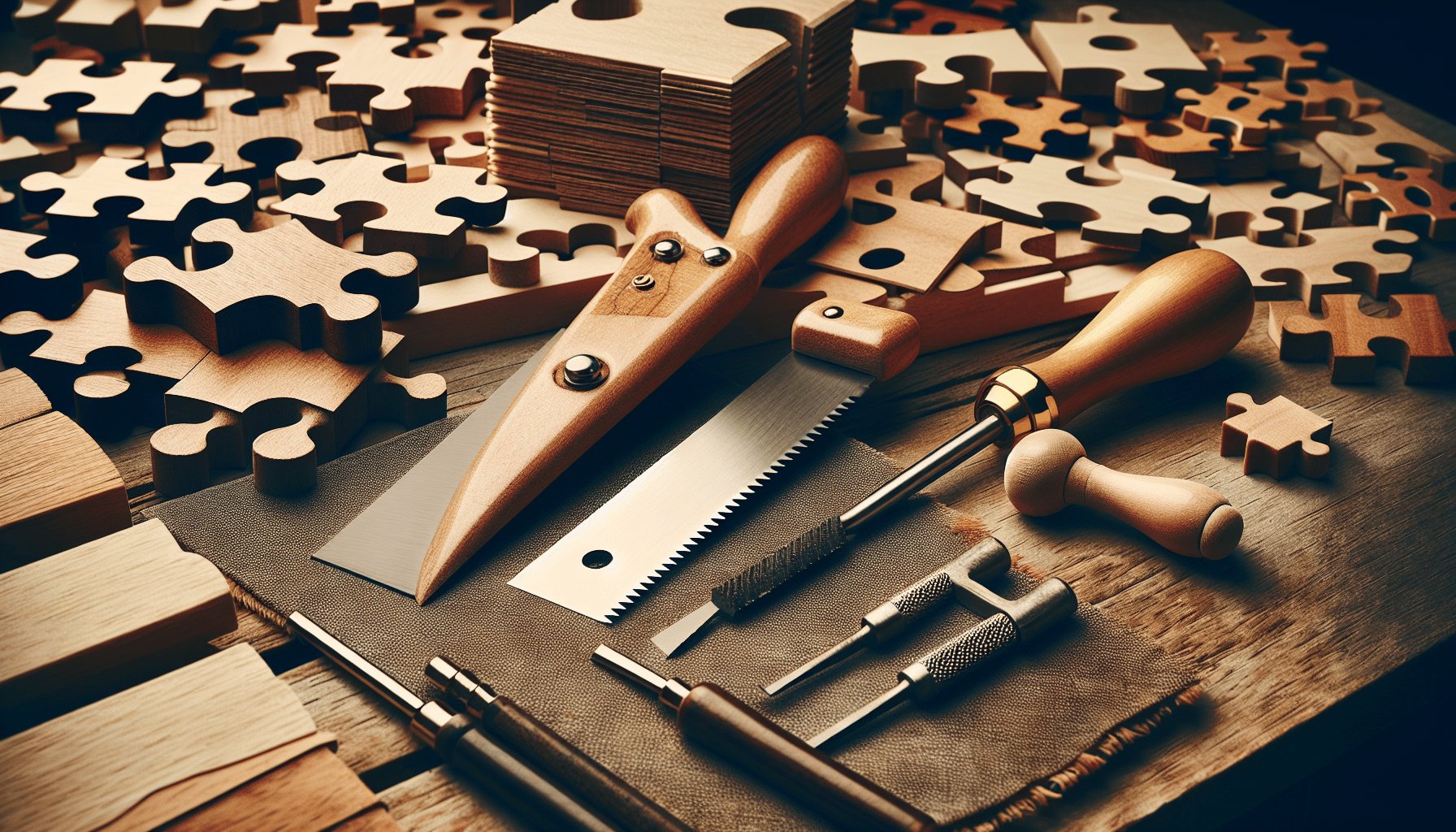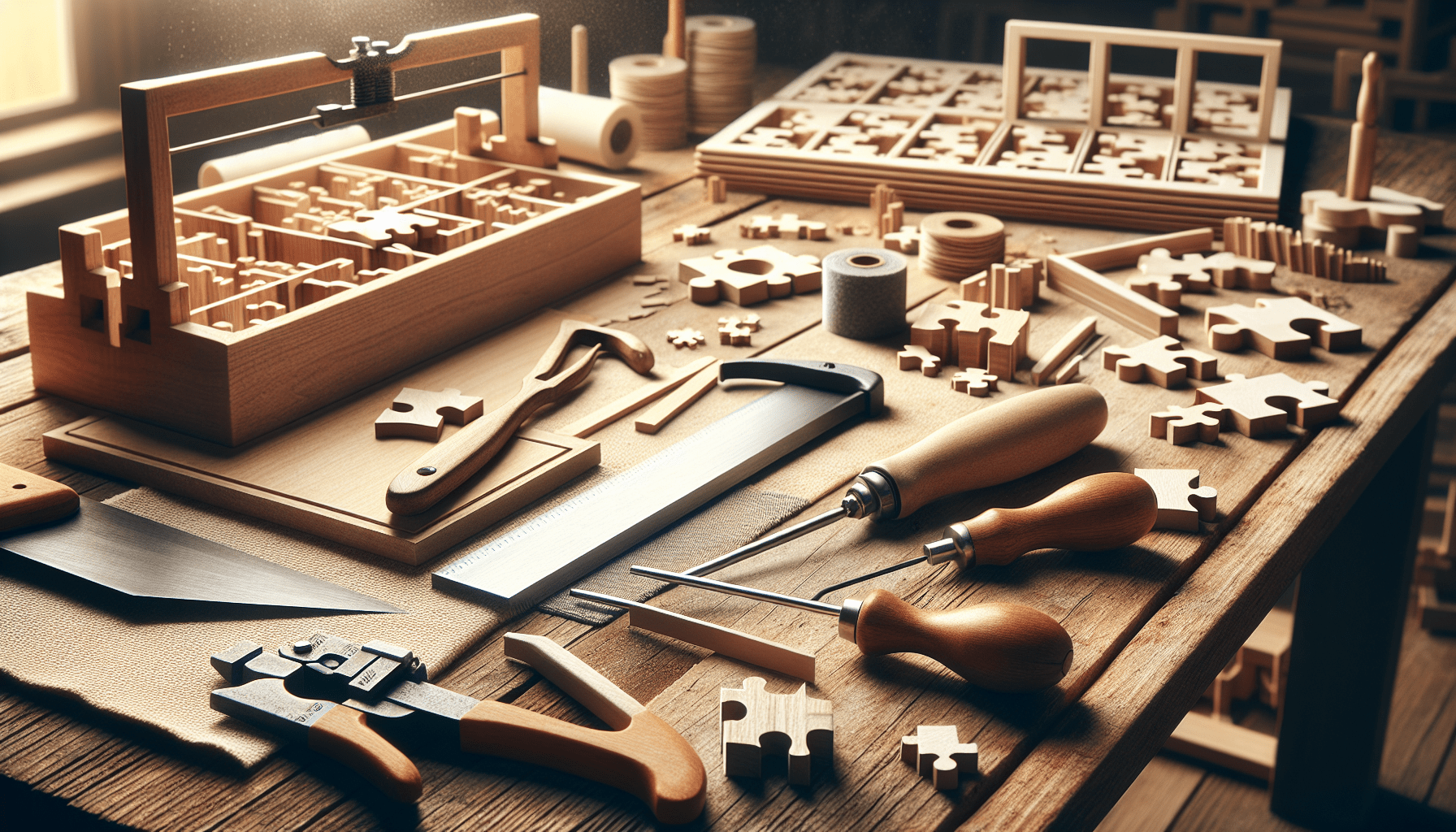Have you ever wondered what tools you need to build a 3D wooden puzzle? Creating these intricate, beautiful models is a rewarding hobby that combines craftsmanship, patience, and a love for puzzles. Whether you’re working on a 3D wooden puzzle from brands like Robotime, Rokr, Ugears, Wood Trick, EWA, Vitascope, Wooden City, or Handmadecity, knowing the right tools can make all the difference in your building experience.
Basic Tools for Building a 3D Wooden Puzzle
When starting your 3D wooden puzzle project, you’ll want to gather a few basic tools. These tools are essential for ensuring that your pieces fit together correctly and that your model is sturdy and well-crafted.
Hobby Knife or Precision Craft Knife
A sharp hobby knife or precision craft knife is indispensable. It helps you in removing pieces from the wooden sheets cleanly. You’ll also use it for trimming any rough edges or tabs that might prevent the pieces from fitting together perfectly.
Sandpaper
Sandpaper is another fundamental tool in your arsenal. It smooths out the edges of the wooden pieces, which is crucial for achieving a seamless fit. Fine-grit sandpaper is generally preferred as it prevents you from over-sanding and potentially damaging your pieces.
Glue
While many 3D wooden puzzles are designed to be put together without glue, having some on hand can be useful for reinforcing weak points or securing pieces that tend to come loose. Make sure to use clear-drying wood glue for the best results.
Tweezers
Tweezers are incredibly useful for handling small, delicate pieces that are hard to manipulate with your fingers. This tool provides precision and helps you place pieces exactly where they need to go.
Small Hammer or Mallet
A small hammer or mallet can help you gently tap pieces into place when they are too tight to fit by hand. Be cautious, though, as too much force can damage the wood.
Advanced Tools for a More Refined Build
Once you’ve got the basics down, you might want to explore some advanced tools to refine your building process further. These tools can enhance your building experience and improve the precision and quality of your finished model.
Clamps
Mini clamps or binder clips can hold pieces together while the glue dries. This ensures that your pieces stay in the correct position and can improve the overall strength of your model.
Needle Files
Needle files are perfect for fine-tuning the fit of your pieces. These small, precise files can get into tight corners and smooth out intricate cuts that sandpaper can’t reach effectively.
Pin Vise
A pin vise is a small, hand-operated drill. It allows you to make tiny holes in your pieces, which can be useful for adding custom details or making adjustments to the model.
Magnifying Glass
A magnifying glass can be incredibly handy, especially for models with a lot of small, detailed parts. It allows you to see what you’re doing more clearly and ensures precision in your work.
Cutting Mat
A cutting mat provides a safe, stable surface for cutting and assembling your pieces. It also protects your work surface from scratches and cuts.
Workbench Organizer
Keeping your tools and pieces organized is crucial. A workbench organizer with compartments can help you keep everything in its place, reducing the time you spend searching for the tools or pieces you need.

Special Considerations for Specific Brands
Different brands may have specific requirements or recommendations for tools. Let’s take a look at some of the popular brands and any unique tools or techniques they might suggest.
Robotime and Rokr
These brands often feature intricate designs with mechanical movements. For these models, having precise tools like a pin vise for creating small holes, or needle files for fine-tuning, can be particularly useful.
Ugears
Ugears models often include moving parts like gears and cranks. A small hammer or mallet and a good supply of wood glue can help ensure that these moving parts fit together smoothly and stay in place during operation.
Wood Trick and EWA
These brands are known for their architectural models and puzzles with lots of small, detailed parts. A magnifying glass and tweezers will be your best friends when working on these models.
Vitascope, Wooden City, and Handmadecity
These brands often have more artistic and decorative designs. Clamps and a workbench organizer will help you keep everything in place and reduce the risk of losing or misplacing any pieces.
Tips and Tricks for Building 3D Wooden Puzzles
Beyond just having the right tools, there are a few tips and tricks that can make your building experience smoother and more enjoyable.
Read the Instructions Carefully
This might seem obvious, but taking the time to thoroughly read the instructions before you start can save you a lot of trouble down the line. Make sure you understand each step and have a clear mental picture of the end goal.
Test Fit Before Gluing
Always do a dry run by fitting the pieces together before applying glue. This ensures that everything fits as expected and allows you to make any necessary adjustments.
Keep a Clean Workspace
A tidy workspace can greatly enhance your building experience. It reduces the risk of losing small parts and helps you focus on the project at hand.
Take Your Time
Building a 3D wooden puzzle is a marathon, not a sprint. Rushing through the process can lead to mistakes and frustrations. Take your time, enjoy the process, and appreciate the craftsmanship involved.
Use Small Amounts of Glue
When using glue, a little goes a long way. Too much glue can make a mess and potentially damage the wood. Apply in small amounts and be patient while it dries.
Customize Your Model
Don’t be afraid to add your own touch to the model. Whether it’s painting, staining, or adding small decorative elements, customizing your puzzle can make it even more unique and personal.

Common FAQs About 3D Wooden Puzzles
What Type of Glue is Best for 3D Wooden Puzzles?
Clear-drying wood glue is usually the best choice for 3D wooden puzzles. It provides a strong bond without leaving visible residue. For temporary or less permanent fixes, some hobbyists also use PVA glue or even gel-based super glue.
Are 3D Wooden Puzzles Suitable for Kids?
3D wooden puzzles can be a great activity for kids, but supervision is recommended. Some models contain small parts, which could be a choking hazard. Also, the use of tools like hobby knives and tweezers should be handled by an adult or under adult supervision.
Can I Paint or Stain My 3D Wooden Puzzle?
Absolutely! Painting or staining your 3D wooden puzzle can add a personal touch and bring your model to life. Just be sure to use appropriate paints and stains that won’t warp the wood. Acrylic paint is often a good choice for projects like these.
How Long Does it Take to Build a 3D Wooden Puzzle?
The time it takes to build a 3D wooden puzzle varies based on the complexity of the model and your skill level. Simple puzzles can take a few hours, while more intricate models can take several days or even weeks to complete.
Where Can I Find Replacement Parts?
If you lose or break a piece, some manufacturers offer replacement parts. Check the brand’s website or contact their customer service for help. In some cases, hobby shops may also carry spare parts that can be adapted to fit your puzzle.
Conclusion
Building a 3D wooden puzzle is a delightful mix of art, engineering, and patience. Having the right tools at your disposal can significantly enhance your experience and help you create a model that you can be truly proud of. From basic tools like a hobby knife and sandpaper to more advanced ones like clamps and needle files, each tool serves a purpose in making your build smoother and more precise.
Remember, each brand may have specific needs or tips, and it’s always wise to read the instructions thoroughly before starting. Don’t rush, keep your workspace clean, and don’t be afraid to make the model truly your own with paint or other customizations. Whether you’re a beginner or a seasoned builder, the right tools and approach can make all the difference. Happy building!